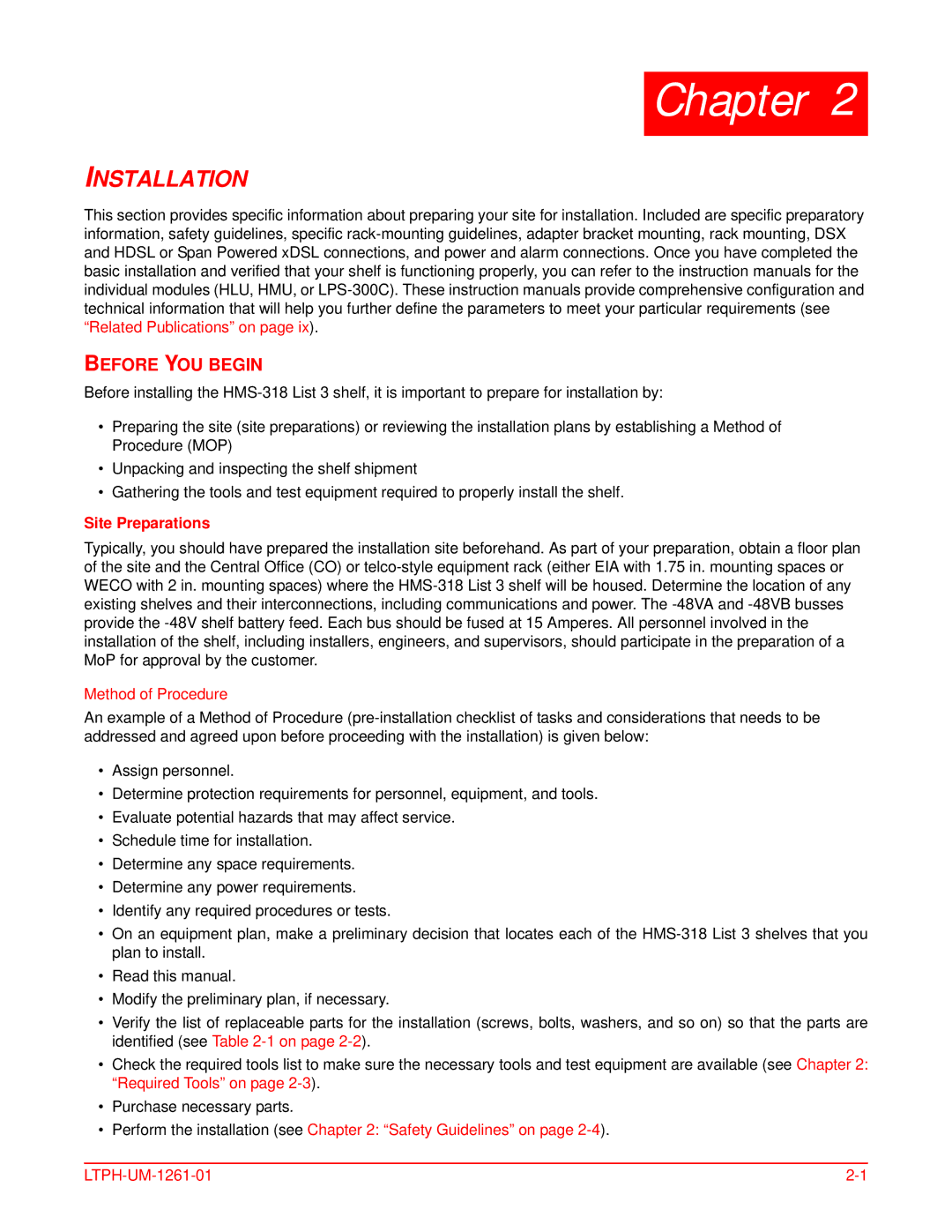T1MF2S04RA, HMS-318, LTPH-UM-1261-01 specifications
The ADC LTPH-UM-1261-01, HMS-318, and T1MF2S04RA are exemplary devices tailored for advanced data communications and network management. Each product is designed with unique features, technologies, and characteristics that cater to various applications in the telecommunications sector.The ADC LTPH-UM-1261-01 is a high-performance unit that excels in low power consumption while providing reliable data integrity. Equipped with advanced error correction capabilities, this device ensures the seamless transmission of data over long distances. One of its standout features is its ability to support multiple transmission protocols, making it highly versatile for various applications. Its compact design allows for easy integration into existing systems, enabling operators to upgrade without significant infrastructure changes.
On the other hand, the HMS-318 is renowned for its enhanced connectivity options. It supports multiple interface types, including Ethernet, Serial, and Fiber optic connections, making it a highly adaptable solution for a variety of network configurations. The HMS-318 comes with built-in security features like encryption and authentication protocols, which safeguard data against unauthorized access. Additionally, its user-friendly interface makes configuration simple, allowing network managers to swiftly deploy and manage the device within their ecosystems.
The T1MF2S04RA represents the cutting-edge of telecommunications technology, particularly in the realm of T1 line functionalities. It is engineered to optimize the management of T1 circuits, facilitating efficient bandwidth allocation and monitoring. The T1MF2S04RA also features state-of-the-art diagnostic tools that provide real-time analytics, allowing operators to quickly identify and rectify issues. Its robustness ensures minimal downtime, which is critical for maintaining the reliability of telecommunication networks.
In summary, the ADC LTPH-UM-1261-01, HMS-318, and T1MF2S04RA stand out in their respective domains due to their innovative technologies and features. From enhancing data integrity to providing extensive connectivity options and advanced diagnostic capabilities, these devices exemplify the strides made in modern telecommunications. They are indispensable tools for operators seeking to enhance their network performance and reliability in a rapidly evolving technological landscape. Each product not only meets the current demands of the industry but also provides a scalable foundation for future growth.
